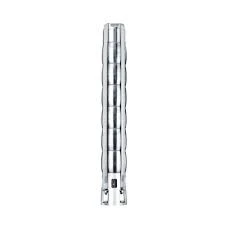Nov . 10, 2024 10:26 Back to list
Choosing the Right Cable for Submersible Pump Applications and Reliability
Understanding Submersible Pump Cables Key Features and Considerations
Submersible pump cables are essential components in various applications, particularly in the fields of agriculture, water supply, and wastewater management. These cables are designed to transmit electrical power to submersible pumps, which are installed underwater for efficient operation. Understanding the features, materials, and installation considerations of submersible pump cables is vital for ensuring safety, reliability, and performance in these applications.
Key Features of Submersible Pump Cables
1. Water Resistance Given their use in underwater environments, submersible pump cables must be highly resistant to water and moisture. They are typically designed with outer jackets made of materials that prevent water intrusion. Common materials include polyvinyl chloride (PVC) and thermoplastic elastomer (TPE), which provide excellent insulation and protection against water.
2. Durability The cables must withstand harsh conditions, including extreme temperatures, chemical exposure, and physical wear and tear. High-quality submersible pump cables often feature abrasion-resistant outer jackets and may be reinforced with additional materials to enhance resilience.
3. Electrical Conductivity The effectiveness of a submersible pump cable is largely determined by its electrical conductivity. Cables are generally made with copper or aluminum conductors, with copper being favored for its superior conductivity and corrosion resistance. The choice of conductor material can have a significant impact on the pump's efficiency and performance.
4. Flexibility Since submersible pumps may need to be repositioned or adjusted during installation and operation, the cables should be flexible enough to allow for easy handling. This flexibility also helps reduce stress on the cable, minimizing the risk of damage during installation or operation.
5. Voltage Rating Submersible pump cables come with various voltage ratings to accommodate different types of pumps and applications. It is crucial to select a cable that matches the voltage requirements of the pump to ensure safe and effective operation.
submersible pump cable

Installation Considerations
1. Proper Sizing Choosing the right size of the cable is critical. The gauge of the wire affects its current-carrying capability and resistance. A cable that is too small can lead to overheating and reduced efficiency, while a cable that is too large may be cumbersome and unnecessarily expensive. Consulting the pump's specifications and local electrical codes is essential when determining the appropriate cable size.
2. Depth and Environment The depth at which the pump will operate influences the choice of cable. Some cables are rated for specific depths, and users must consider factors such as temperature variations and the presence of chemicals in the water. Selecting a cable that meets or exceeds these environmental requirements is crucial for long-term reliability.
3. Connector Types Submersible pump installations typically involve various connector types. It is important to use connectors that are designed for underwater applications to prevent water intrusion. These connectors should also be compatible with the cable and the pump to ensure a secure and reliable connection.
4. Testing and Maintenance Regular testing of submersible pump cables can help identify potential issues before they lead to failure. Factors such as insulation resistance testing and visual inspections should be part of a routine maintenance schedule to ensure the cable's integrity over time.
5. Compliance with Standards It is essential to choose submersible pump cables that comply with relevant electrical and safety standards, such as those set by the National Electrical Code (NEC) or international standards. Compliance ensures that the cables are safe for use and minimizes the risk of electrical hazards.
Conclusion
In summary, submersible pump cables are critical to the effective operation of underwater pumps. Their unique features, including water resistance, durability, and flexibility, make them suitable for a variety of applications. To ensure optimal performance, proper installation, maintenance, and adherence to safety standards are essential. By understanding these aspects, users can select and maintain submersible pump cables that ensure reliable and efficient pump operation for years to come.
-
Submersible Water Pump: The Efficient 'Power Pioneer' of the Underwater World
NewsJul.01,2025
-
Submersible Pond Pump: The Hidden Guardian of Water Landscape Ecology
NewsJul.01,2025
-
Stainless Well Pump: A Reliable and Durable Pumping Main Force
NewsJul.01,2025
-
Stainless Steel Submersible Pump: An Efficient and Versatile Tool for Underwater Operations
NewsJul.01,2025
-
Deep Well Submersible Pump: An Efficient 'Sucker' of Groundwater Sources
NewsJul.01,2025
-
Deep Water Well Pump: An Efficient 'Sucker' of Groundwater Sources
NewsJul.01,2025
-
 Submersible Water Pump: The Efficient 'Power Pioneer' of the Underwater WorldIn the field of hydraulic equipment, the Submersible Water Pump has become the core equipment for underwater operations and water resource transportation due to its unique design and excellent performance.Detail
Submersible Water Pump: The Efficient 'Power Pioneer' of the Underwater WorldIn the field of hydraulic equipment, the Submersible Water Pump has become the core equipment for underwater operations and water resource transportation due to its unique design and excellent performance.Detail -
 Submersible Pond Pump: The Hidden Guardian of Water Landscape EcologyIn courtyard landscapes, ecological ponds, and even small-scale water conservancy projects, there is a silent yet indispensable equipment - the Submersible Pond Pump.Detail
Submersible Pond Pump: The Hidden Guardian of Water Landscape EcologyIn courtyard landscapes, ecological ponds, and even small-scale water conservancy projects, there is a silent yet indispensable equipment - the Submersible Pond Pump.Detail -
 Stainless Well Pump: A Reliable and Durable Pumping Main ForceIn the field of water resource transportation, Stainless Well Pump has become the core equipment for various pumping scenarios with its excellent performance and reliable quality.Detail
Stainless Well Pump: A Reliable and Durable Pumping Main ForceIn the field of water resource transportation, Stainless Well Pump has become the core equipment for various pumping scenarios with its excellent performance and reliable quality.Detail
